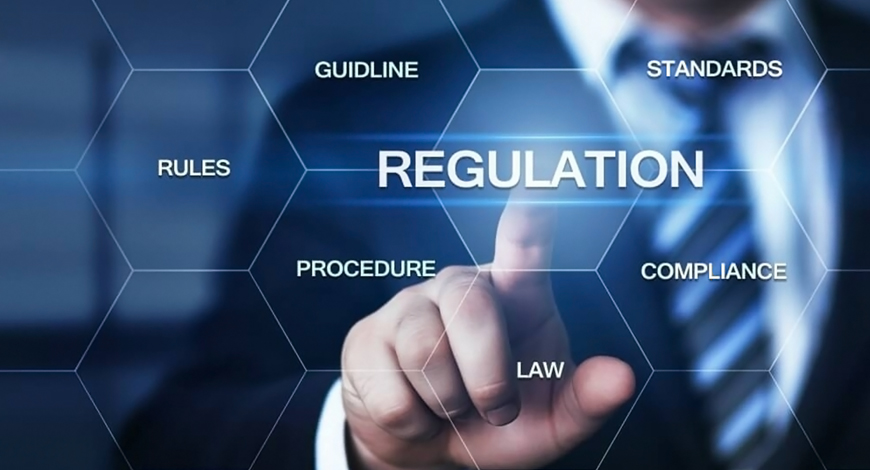MB's Take
New legislation for medical devices – Reactionary or revolutionary?

The proposed legislation is the first step toward changing India’s current system of regulating drugs and cosmetics, and the long-overdue revision of the Drugs and Cosmetics Act is to be applauded. Manufacturers should switch to the internal licensing system, though many are struggling with the government audits’ slow pace or simply failing to pass them.
The healthcare and medical devices sectors in India have grown appreciably in the last decade. The Indian medical devices industry is Asia’s fourth largest and medical technology sector in India, projected to reach ₹390,000 crore by 2025, and currently pegged at ₹78000 crore. However, the indigenous medical devices industry is valued at ₹250 crore, contributing to only 6 percent of India’s total healthcare sector.
The current regulatory structure is blemished by barriers as lack of regulatory environment, rules or regulations and guidelines, low penetration, high capital investment and lack of active participation from the government. The regulatory bodies recognize the need to frame guidelines and regulatory approval processes and for quality benchmark on par with global standards.
On September 14, 2022, the reconstituted National Medical Devices Promotion Council (NMDPC) under the Department of Pharmaceuticals, held its first meeting, and updated on steps taken up by the Central Drugs Standards and Control Organization (CDSCO) and the State Licensing Authorities (SLAs) for the smooth transition to licensing of Class A and B Medical Devices. The Council under the chair of the Secretary, Department of Pharmaceuticals (DoP), has members from stakeholder departments/organizations, functions of which have a bearing on the growth of the sector and has representation from several medical devices industry associations, representing the sector in India. The NMDPC deliberated on the important issues of the MedTech industry.
At the outset, DoP presented to the Council the latest status of the various initiatives taken by the department for the sector such as 100 percent FDI in MedTech sector on automatic route, PLI scheme for medical devices, medical devices parks in four states, assistance for common infrastructure facility of superconducting magnetic coil testing facility, and the like. The department is also engaging the medical devices industries for arriving at consensus on the industry issues by forming Standing Forums and by organizing sessions of regulatory roundtable.
Department of Health and Family Welfare (DoHFW) updated the preparedness for transition to licensing of Class A and Class B medical devices, w.e.f. October 1, 2022, under Medical Devices Rules 2017. The Council appreciated the various efforts made by the CDSCO/DoHFW in rolling out the licensing process of Class A and B medical devices. All remaining Class C and D devices not already notified will need to have import licenses by October 1, 2023.
The transition of Class A and Class B medical devices makers to the licensing regime by October 1 seems to be an uphill task with several small and medium manufacturers still awaiting the audit from the government authorities. If the licenses do not come through, either due to lack of audits or MSME units not clearing the audits, then a few thousand small-scale medical devices units will face the issue of business continuity in three weeks.
Around 615 licenses for Class A and B medical devices makers are under processing so far (till September 13, 2022). Of these, 77 units are in Maharashtra, 76 in Tamil Nadu, 57 in Karnataka, 53 in Uttar Pradesh, 44 in Gujarat, and 37 in New Delhi. 2492 applicants from across the country have registered with the CDSCO.
The industry has sought a three-month extension, as it is not possible to get all these licenses within three weeks with a backlog of audits. The government officials are empathetic, but they are not keen to permit an extension.
The Council, after deliberating the issues with the industry associations, DoHFW and DoCA officials, suggested to the health regulator to move forward to harmonize the provisions of labelling of medical devices under the Legal Metrology (Packaged Commodity) Rules, 2011 into Medical Devices Rules, 2017, for the licensed medical devices.
“The priority should be patient safety, and removing the packaging regulations will only help importers. The Legal Metrology Act and Consumers Protection Act’s packaging regulations and other provisions have not always been followed by importers because of the strict enforcement of these laws against Indian manufacturers, but lax enforcement against them. We respect local laws when exporting goods to the US, EU, and Middle East, but importers who do not want to be regulated seek exemptions from these laws and regulations under the guise of ease of doing business. The Department of Consumer Affairs and DoP need to enforce the law and the rule book equitably, and provide a level playing field and not get misled by importers. Patient safety aspects under Drugs Act are complementary to consumer protection aspects of Legal Metrology Act,” emphasizes Rajiv Nath, Forum Coordinator, AiMeD.
Even as the Center has indicated its plans to have a single Act for pharmaceuticals, medical devices, and cosmetics through a new Draft Bill, the Department-Related Parliamentary Standing Committee (DRPSC) on health and family welfare has strongly recommended a separate legislation for the medical devices industry.
DRPSC presented its 138th report on Medical Devices – Regulation & Control to the heads of Rajya Sabha and Lok Sabha on September 14. While welcoming, the initiative of the ministry to set up a panel to make the new Drugs, Medical Devices and Cosmetics Bill with separate provisions for medical devices, the committee, strongly recommends that instead of drafting a combined legislation for drugs, medical devices, and cosmetics, the ministry should appreciate the potential of the medical devices industry and formulate a separate legislation for medical devices.
The new legislation should set up a new set of regulators at different levels for regulating the medical devices industry. The country has only 18 certified medical devices testing laboratories that have been approved by CDSCO and that is grossly insufficient keeping in view the size of the country. Having adequate common infrastructure including accredited laboratories in various regions of the country for standard testing would significantly encourage local manufacturers to get their products tested for standards and such measures undertaken would also help in reducing the cost of production which ultimately will improve the availability and affordability of medical devices in the domestic market.
With the industry growing by leaps and bounds, the government should not afford regulation of medical devices by pharma experts and its time that at ground level the medical devices regulations are dispensed with by qualified and well-trained medical devices officers to give a fillip to the medical devices industry in the country.
Capillary blood sampling can facilitate hematology testing in children
Andrey Shanchev
Commercial Operations Director Russia Sales,
Boule Diagnostics AB
Pediatric hematology concerns infants, children, and adolescents that are diagnosed with disorders affecting the blood cells. Common disorders include infectious disease, anemia, bleeding, and other blood-clotting diseases, and platelet dysfunctions. In pediatric oncology, leukemia is reported to be the most common cancer in children.
For hematology testing, vein puncture is the primary method of blood collection. Children, however, are among the most difficult patients from whom to collect blood samples. Vein puncture can be both a traumatic and painful experience. Compared with adults, pediatric patients have smaller veins and an excess of subcutaneous fat, making visualization and palpation of veins challenging in children. Of utmost importance is to consider the child’s physical and emotional well-being, and to ensure safety and efficacy when collecting blood.
Capillary blood collection instead of venous blood collection can, therefore, be especially useful in pediatrics. The method is also gaining popularity, as blood sampling from a fingerstick or heel-prick many times is considered less invasive to the patient and easier to perform for the healthcare professional. To avoid effects of blood volume reduction and reduce the risk of anemia, a large part of the procedures in neonatal units are performed using capillary blood samples.
Capillary blood collection for direct hematology testing can also help overcome many of the pre-analytical errors associated with venous blood sampling, including blood clotting or hemolysis as well as incorrect tube filling or erroneous labelling.
Many compact bench-top hematology analyzers allow for analysis of both venous and capillary whole blood. However, improper preparation and blood collection procedures can cause discrepancies between capillary and venous blood values. The capillary sampling procedure should ensure a good blood flow. A deep and firm puncture allows for free-flowing drops of blood. To increase the blood flow, the site for puncture can be warmed for some few minutes before disinfection and puncture of the skin. To minimize interstitial and intracellular fluids in the sample, the first drop of blood should be wiped off with a clean tissue. Following general WHO or CLSI recommendations, the CBC results obtained with capillary samples should be comparable with those obtained with venous blood samples.
There is a dire need for developing a robust IT-enabled, feedback-driven post market surveillance system for medical devices to evaluate the efficiency of specific medical devices.
For the application of the license for manufacturing, exports, and imports shall also integrate all these bodies involved in the regulation of medical devices. A single window clearance for all the departments/ministries would significantly boost investment in R&D in the field of medical devices and would also reduce the time required for obtaining approvals from different departments/ministries. The ministry must incorporate such an all-encompassing single window clearing/approval system in the proposed new separate Act for the regulation of medical devices.
Shifting gears, an export promotion council for medical devices is in the offing. The Department of Commerce (DoC) has approved setting up a separate Export Promotion Council (EPC) for the medical devices sector under the administrative control of the Department of Pharmaceuticals to help exporters in promoting their products in international markets. It will be headquartered in Noida and will have offices in Andhra Pradesh and Telangana. The Regional Office at Visakhapatnam is expected to be set up in a period of one year, by the end of 2023, and the regional office at Hyderabad will be set up in a period of three years, by 2025.
The medical devices industry welcomed the move. The strategic step will go a long way in accelerating the exports of medical devices from India. The country would be able to further develop its domestic manufacturing capacity as well as become a major supplier to the global market for high-quality medical devices and equipment thanks to the overall emphasis on Make in India and the frequently stated goal of ranking among the top five manufacturers of medical devices worldwide.
India currently exports ₹23,766 crore (2021-22) worth of medical devices up from the previous year ₹19,736 crore.
The government would now assist domestic manufacturers in raising the visibility of their products and services in the global market by facilitating their participation in foreign trade fairs, exhibitions, and other similar events.
The government would now assist domestic manufacturers in raising the visibility of their products and services in the global market by facilitating their participation in foreign trade fairs, exhibitions, and other similar events. Despite PLI initiatives and the existence of medical devices parks, which are intended to increase domestic manufacture, imports of medical equipment have recently increased. The industry is expecting that EPC will have the same effect on domestic exports of medical devices as Pharmexil did for exports of pharmaceuticals.












